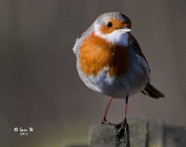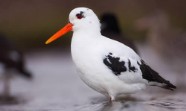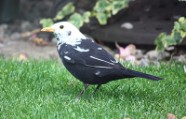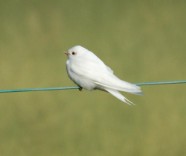Strange White Birds
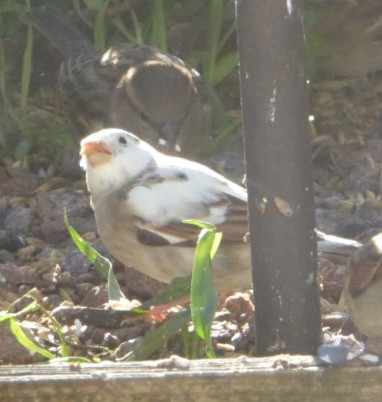

Over the winter, various people in Blackwaterfoot area contacted me about "strange white birds" coming to their garden feeders. It reminded me of the contacts that I had during the first week in August 2016 when there was reports of a "white" House Martin at the north end of Whiting Bay. With the latest encounters usually it was one bird in the garden but occasionally two, one smaller than the other. With the help of the home owners I was able to get photographs of one of the "strange white birds". It was with House Sparrows and the non-white feathers were House Sparrow feathers. It was a House Sparrow with white patches. From the description of the smaller one I suspect it was a Blue Tit with white patches.
Birds like this are said to be leucistic. They are not a separate species just individual birds with this condition. From the selection of images with this article sometimes the condition makes the plumage entirely white and sometimes there are varying sizes of patches of white. It is thought to happen when the plumage lacks melanin pigment due to the cells responsible for making melanin being absent. This results in white feathers, unless the normal plumage colour also comprises carotenoids (e.g. yellows), which remain unaffected by the condition. The reduction of pigment in leucistic birds causes feathers to weaken and be more prone to wear. In some situations this can hinder flight, which, in addition to leucistic birds usually being more conspicuous, can heighten risk of predation. There is also evidence that leucistic birds might, on occasion, not be recognised or accepted by a potential mate.
Albinism also results in white feathers but true albinos are thought to be rare in the wild. Albinism is caused by a genetic mutation. An albino individual is unable to produce any melanin pigments. This leads to a good diagnostic feature with which to distinguish leucistic and albino individuals – the colour of the eye. Albinos have pink eyes while the iris pigmentation of leucistic birds remains dark.
There is more information on the British Trust for Ornithology website The link also includes a simple on line survey that you should complete if you have seen a bird with this type of unusual plumage.
